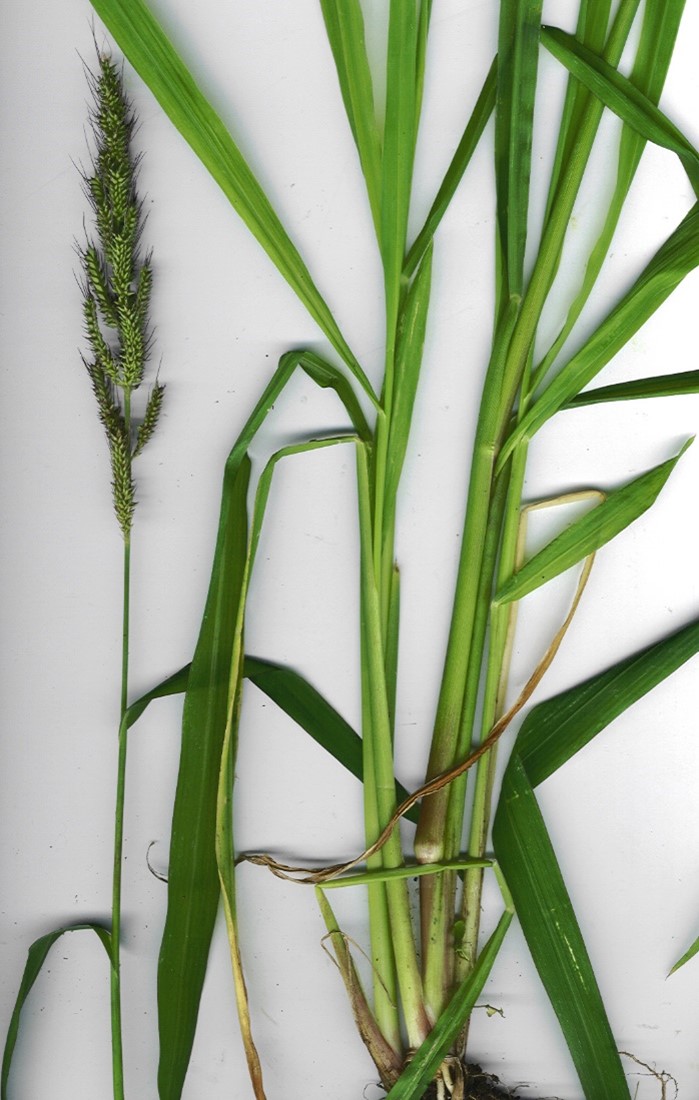Contributed by Doug Finkelnburg, Area Extension Educator–Dryland Cropping Systems, University of Idaho
By now most weed warriors in the Pacific Northwest are at least tangentially aware of the extreme difficulties western Australian farms have with herbicide-resistant weeds. The capacity of rigid ryegrass (Lolium rigidum) to develop multiple resistances to herbicides has been a cautionary tale while we develop strategies to battle its close cousin, Italian ryegrass (Lolium perenne ssp. multiflorum), and its similar penchant for resistance. We are likely also aware of the rise of superweeds such as multiple herbicide-resistant Palmer amaranth (Amaranthus palmeri) and waterhemp (Amaranthus tuberculatus) in the Midwest and southern United States—a truly alarming development. However, what remains less frequently discussed is the impact of herbicide-resistant weeds on cropping systems in other corners of the world. Let us take a moment to examine the global landscape and identify the weeds in various crops that are causing the most severe challenges for producers.
Europe:
In Europe, particularly in the United Kingdom and France, the menace of blackgrass (Alopecurus myosuroides) has risen to prominence, casting a long shadow over cereal crops, particularly wheat. This resilient weed has developed resistance to multiple herbicide modes of action, making its effective management an intricate puzzle. Adding to the complexity, both target site resistance and non-target site (metabolic) resistance mechanisms have been identified in various biotypes of this species. With resistance evident against ACCase inhibiting herbicides (such as clethodim and sethoxydim) and ALS inhibitors, it now stands as one of the top 15 most serious herbicide-resistant weeds globally, with resistance to a staggering seven different sites of action.
Meanwhile, Mediterranean European countries are grappling with rigid ryegrass populations that exhibit multiple resistances, including ACCase, ALS, and photosystem II (PSII) inhibitors. In 2023, alarming reports surfaced from Spain, indicating that some populations now resist four distinct sites of action (ACCase, ALS, PSII, and very-long-chain fatty acid synthase inhibitors), signifying a troubling trend.
Asia:
In Mainland China, a different herbicide-resistant blackgrass species (Alopecurus aequalis) is posing challenges in wheat production. Simultaneously, herbicide-resistant barnyardgrass (Echinochloa crus-galli) is wreaking havoc in mainland China’s primary crop—rice. Populations of barnyardgrass have exhibited resistance to one or more of the following herbicide classes: long-chain fatty-acid inhibitors, lipid inhibitors, synthetic auxins, ACCase inhibitors, and ALS inhibitors. However, it’s important to note that every major cropping system in Mainland China has reported issues with herbicide resistance as pesticide use became more common, spurred by the necessity to replace agricultural workers who migrated to urban centers during rapid industrialization over the past two decades. It is noteworthy that the development of integrated weed management strategies in China has lagged compared to efforts in North America and Europe.
South America:
Glyphosate-resistant crops such as corn and soybeans dominate Brazilian agriculture, and subsequently glyphosate-resistant Italian ryegrass, hairy fleabane, marestail, and Palmer amaranth (Conyza bonariensis & Conyza canadensis) have become some of the most problematic weeds in these systems. In Argentina, ALS-resistant pigweed (Amaranthus quietensis) was found in the early 1990s but problems significantly increased when glyphosate-resistant Johnsongrass (Sorghum halepense) and ryegrass developed in the mid-2000s with several additional species added since.
Africa:
On the African continent, South Africa has emerged as a hotspot for herbicide-resistant weed incidents. Following a familiar script, ACCase and ALS resistance in wild oat and rigid ryegrass arose in the 1980s and early 1990s. With the introduction of glyphosate-resistant corn and soybeans in the late 1990s, glyphosate-resistant blackgrass, hairy fleabane, and buckhorn plantain quickly followed suit. Currently, both rigid ryegrass and Palmer amaranth can be found exhibiting multiple resistances, not only to glyphosate but also to various other sites of action.

Blackgrass in barley.

Rigid ryegrass.

Barnyardgrass (Echinochloa crus-galli)

Hairy fleabane. Photo: Juan Campá, MGAP, Bugwood.org.
What can be learned from this brief glance at the challenges herbicide-resistant weeds present in other parts of the world? Herbicide-resistant weeds are a global issue affecting different continents. This highlights that herbicide resistance is not limited to specific regions and can emerge wherever herbicides are extensively used. Wherever glyphosate-resistant crops have gone, glyphosate-resistant weeds have been soon to follow. However, amidst the challenges, there is a positive result: there appears to be a growing global recognition of the formidable challenges these weeds pose. This recognition is encouraging because it suggests that effective solutions, once developed, can potentially be shared and adapted across different regions.
Sources:
Heap, I. The International Survey of Herbicide Resistant Weeds. Online. Internet. Friday, September 1, 2023. Available www.weedscience.org
Liu, X., Merchant, A., Xiang, S., Zong, T., Zhou, X., & Bai, L. (2021). Managing herbicide resistance in China. Weed Science, 69(1), 4-17. doi:10.1017/wsc.2020.68
Liu, X., Xiang, S., Zong, T., Ma, G., Wu, L., Liu, K., . . . Bai, L. (2019). Herbicide resistance in China: A quantitative review. Weed Science, 67(6), 605-612. doi:https://doi.org/10.1017/wsc.2019.46
Merotto, Aldo, et al. “Herbicide Use History and Perspective in South America.” Advances in Weed Science, vol. 40, no. spe1, 2022, https://doi.org/10.51694/AdvWeedSci/2022;40:seventy-five010.
Montull, J.M. and Torra, J. (2023) Herbicide Resistance Is Increasing in Spain: Concomitant Management and Prevention. Plants, 12, 469. https://doi.org/10.3390/ plants12030469
Ofosu, Rita, et al. “Herbicide Resistance: Managing Weeds in a Changing World.” Agronomy (Basel), vol. 13, no. 6, 2023, p. 1595–, https://doi.org/10.3390/agronomy13061595.